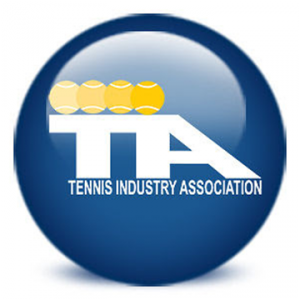 In a recent decision (http://ttabvue.uspto.gov/ttabvue/ttabvue-77836610-EXA-21.pdf) The Trademark Trial and Appeal Board (the “Board”) reversed a refusal to register TENNIS INDUSTRY ASSOCIATION on the basis of genericness but affirmed the refusal after finding that the Applicant had failed to prove acquired distinctiveness.
In a recent decision (http://ttabvue.uspto.gov/ttabvue/ttabvue-77836610-EXA-21.pdf) The Trademark Trial and Appeal Board (the “Board”) reversed a refusal to register TENNIS INDUSTRY ASSOCIATION on the basis of genericness but affirmed the refusal after finding that the Applicant had failed to prove acquired distinctiveness.
Tennis Industry Assn. (the “Applicant”) filed an application to register TENNIS INDUSTRY ASSOCIATION as a trademark for the following good and services:
“association services, namely, promoting the interests of tennis facilities, tennis manufacturers, tennis retailers and tennis court contractors; providing market research services to track the economic vitality of the tennis industry”
Initially the Trademark Examiner (the “Examiner”) refused the registration under Section 2(e)(1) stating that the proposed trademark was merely descriptive of the services but, in a subsequent action, rejected the Applicant’s showing of acquired distinctiveness stating that the trademark was actually generic.
The Applicant filed a brief arguing that the Examiner should have raised the issue of genericness initially. The Board held that the rules do not permit an initial refusal on the ground of genericness quoting the rule that “even if it appears the mark is generic, the proper basis for the initial refusal is Section 2(e)(1).” Further, the Board noted that only when the Applicant raised the issue of proving distinctiveness in their response did the Examiner come back and say it was generic.
Merely Distinctive, Not Generic
The two issues on appeal were whether the mark TENNIS INDUSTRY ASSOCIATION was generic in relation to the goods and services and whether a Section 2(f) showing of acquired distinctiveness was satisfied.
The Board noted that the Applicant had already conceded that the proposed mark is descriptive by seeking registration pursuant to Section 2(f).
“A mark is a generic name if it refers to the class or category of goods and/or services with which it is used.” The Board looked to the public’s recognition of the mark in order to determine genericness. The Board used the Applicant’s recitation of services and sought to find “whether the designation TENNIS INDUSTRY ASSOCIATION is understood by the relevant purchasing public primarily to refer to that genus of services.” It defined the “relevant purchasing public” as “those whose interests are promoted by the applicant’s identified services.”
Because the proposed mark is a phrase, the Board followed the court’s analysis in In re The Am. Fertility Society:
“Where the proposed mark is a phrase, the board cannot simply site definitions and generic uses of the constituent terms of a mark; it must conduct an inquiry into the meaning of the disputed phrase as a whole.”
The Board looked at the record of evidence for genericness submitted by the Examiner consisting of five examples of “tennis industry association” used in all lower case and where no particular source was identified. The Examiner also recorded third-party registrations that include the terms INDUSRTY and ASSOCIATION in which those terms are disclaimed in the registered marks.
The Board found that the Office had not shown by clear and convincing evidence that TENNIS INDUSTRY ASSOCIATION is generic for the services. The Board reasoned that even within the Examiner’s evidence, it is not clear that the mark without capitalization is intended to indicate source. The Board also acknowledged that one of the articles the examiner offered was actually a reference to the Applicant.
The Board ended stating that there is a difference between an apt name and a generic name stating that the Examiner’s evidence shows that TENNIS INDUSTRY ASSOCIATION is an apt name for an association of tennis industry members but not that the mark is generic for the recited associated services.”
No Acquired Distinctiveness
Unlike the determination for genericness, the Applicant had the burden of establishing acquired distinctiveness for its descriptive mark. To prove acquired distinction the Applicant submitted a press release, an annual report, and 500 articles in which the Applicant was identified as TENNIS INDUSTRY ASSOCIATION. The Applicant also submitted evidence of almost $500,000 spent in promotional expenses and $16.5 million in promotion for its grassroots tennis program.
The Board found the evidence did not provide proof of public recognition of TENNIS INDUSTRY ASSOCIATION as a source-identifier reasoning that sheer numbers alone are not necessarily enough to prove secondary meaning. The Board found that the articles were not very compelling because many of them were duplicates and outdated and that there was little evidence that “consumers to whom applicant’s services are directed view TENNIS INDUSTRY ASSOCIATION as a distinctive source indicator.”
In conclusion, although the Board reversed the Examiner’s refusal to register TENNIS INDUSTRY ASSOCIATION on the ground of genericness, it did find that the proposed mark was merely descriptive and affirmed the refusal on the ground that the Applicant failed to show acquired distinctiveness.
David Lilenfeld

You must be logged in to leave a reply.